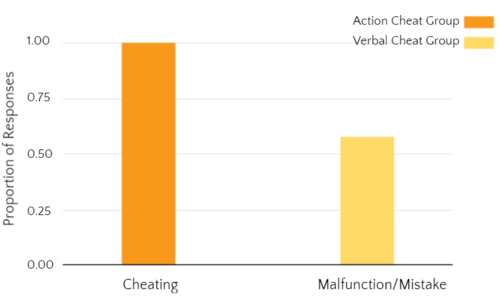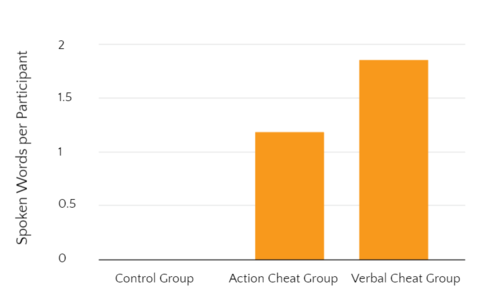Rock Paper Scissors
MS in Computational Design | Human-Robot Interaction (Collaborators: Minhang Gang, Chi Gao, Elizabeth Louie, Varshini Selvadurai)
Carnegie Mellon University
Contribution: User study, paper writing, interaction design.
Tags: Design Research, User Study, Human Robot Interaction
MS in Computational Design | Human-Robot Interaction (Collaborators: Minhang Gang, Chi Gao, Elizabeth Louie, Varshini Selvadurai)
Carnegie Mellon University
Contribution: User study, paper writing, interaction design.
Tags: Design Research, User Study, Human Robot Interaction
The reason why we chose this paper is due to its interesting concept and its feasibility in a remote environment.
The paper mainly examines the degree of attributions of participants’ mental state when the robot varies its behaviour. The original study was conducted through a physical humanoid robot and a simple children’s game. The participants were divided into three different groups, which are the control, verbal cheating and action cheating groups. And the study draws the conclusion that people have greater attributions of mental state when robots show unexpected behaviours.
Since we switched to a virtual environment, there were many elements of HRI that we had to consider. First we have to ensure our virtual robot is capable of playing with our participants in an interactive manner. Thus we preferred a humanoid robot over a program that outputs words or symbols. Additionally we had to consider both verbal and implicit means of communication. Both of these connect to our goal for this study, which is gauging participant’s reactions regarding the intentionality and trust of a cheating robot.
The paper mainly examines the degree of attributions of participants’ mental state when the robot varies its behaviour. The original study was conducted through a physical humanoid robot and a simple children’s game. The participants were divided into three different groups, which are the control, verbal cheating and action cheating groups. And the study draws the conclusion that people have greater attributions of mental state when robots show unexpected behaviours.
Since we switched to a virtual environment, there were many elements of HRI that we had to consider. First we have to ensure our virtual robot is capable of playing with our participants in an interactive manner. Thus we preferred a humanoid robot over a program that outputs words or symbols. Additionally we had to consider both verbal and implicit means of communication. Both of these connect to our goal for this study, which is gauging participant’s reactions regarding the intentionality and trust of a cheating robot.
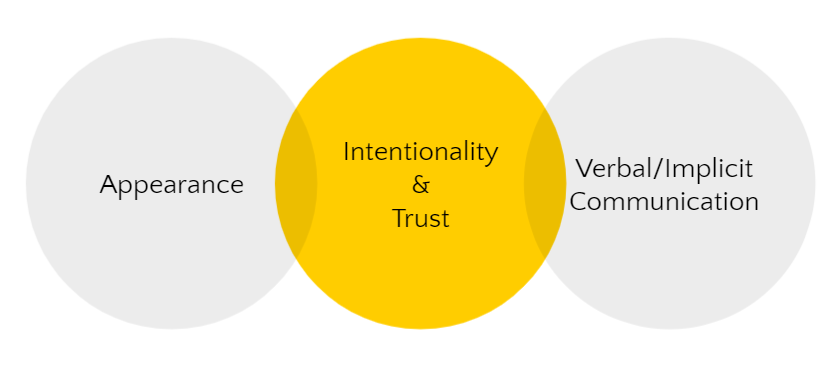
Because our conceptual replication tests whether we can get similar results using a virtual robot rather than a physical one, our independent variable is also the type of cheating that the robot uses when playing rock paper scissors. The levels of our independent variable are no cheating, verbal cheating, where the robot announces their win when the actual outcome is a loss or a tie, and action cheating, which is when the robot changes their move to a winning move before announcing their win. Our dependent variable is the level of engagement and attributions of mental state with our virtual robot and we use both quantitative and qualitative metrics to measure our dependent variable.
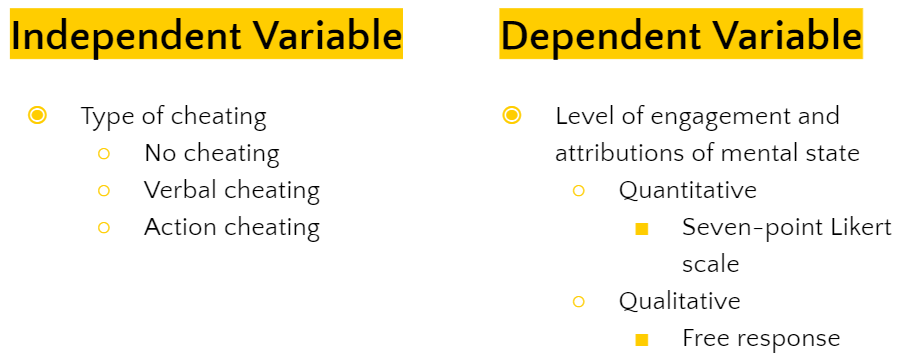
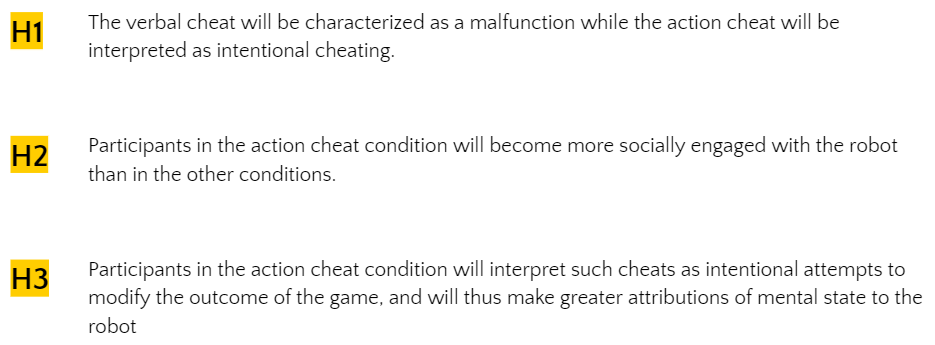

For our experiment we used the well-known game, RPS, to ensure the participant can easily detect when the opponent cheats. We conducted a between studies experiment for our group types to ensure there is no bias. Control Group: Regular game of RPS w/ 20 rounds. Verbal & Action Cheating: We played at least 20 rounds with 3 set rounds of cheating.
In our experiment our robot interacts with the participant through a Wizard of Oz arrangement.
To further understand this setup consider this diagram. Our participants played over Zoom, viewing the robot application through the share Screen function. In each zoom room we has the Manager, Controller and Participant. When a round begins the controller controls the robot, the participant sees and hears the robot and simultaneously interact with their action through their webcam.
The manager who is watching the robot and the participant interact determine the winner and send this information to other controller. The controller than instructs the robot to display this result and the participant perceives this.
- Participants interact with the robot under the assumption that it is autonomous through Image Recognition
- However, behind the scenes the robot is tele-operated
To further understand this setup consider this diagram. Our participants played over Zoom, viewing the robot application through the share Screen function. In each zoom room we has the Manager, Controller and Participant. When a round begins the controller controls the robot, the participant sees and hears the robot and simultaneously interact with their action through their webcam.
The manager who is watching the robot and the participant interact determine the winner and send this information to other controller. The controller than instructs the robot to display this result and the participant perceives this.

For our virtual robot, we used a robot simulator application called Webots, where we developed PAL Robotics’ TIAGo Titanium robot to play rock paper scissors for us. As you see in the image, out robot is a humanoid robot with 1 arm and his name is L. Spock. L.Spock communicates with our participants verbally. Before each round L.spock says “Rock, Paper, Scissor Shoot!” to synchronize its move with participant’s move and then announces a win, a loss, or a tie according to a predetermined script.


After participants played against L. Spock, we asked them to fill out a survey assessing their thoughts. We constructed our survey from the original study and the Interactive Experience Questionnaire. We had several questions concerning general impressions about robot, such as “How engaging was the interaction?” and we measured the responses using a seven-point Likert scale. We also had a free response question asking whether anything about L. Spock’s behavior seemed unusual and if so, what was the unusual behavior.
Using the free response question mentioned in the previous slide, we enlisted 3 people who were unaffiliated with the experiment to label the responses. We asked them to categorize the responses as to whether they anthropomorphized the robot or not and whether the response indicated that the participant thought the robot was cheating, malfunctioning, or neither.
Using the free response question mentioned in the previous slide, we enlisted 3 people who were unaffiliated with the experiment to label the responses. We asked them to categorize the responses as to whether they anthropomorphized the robot or not and whether the response indicated that the participant thought the robot was cheating, malfunctioning, or neither.
